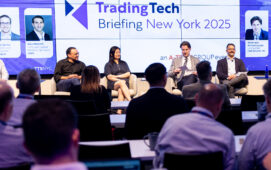
 By Anoushka Rayner, Head of Growth – Commodities at Paxos.
By Anoushka Rayner, Head of Growth – Commodities at Paxos.
Almost fifty years on from the termination of the gold standard, tokenisation is creating new possibilities for the noble metal – gold.
The end of the Breton Woods system, which placed gold at the heart of currency valuation and thus international trade and financial markets, changed the role of gold, diminishing its status. Tokenisation promises to bring it back into the centre of the financial market ecosystem, unlocking new efficiencies and opportunities for retail traders and institutions alike. And, crucially, overcoming one of the key limitations of gold as it is traded today.
Physical gold – conjuring up images of bullion bars in hidden underground vaults and James Bond film plots – is traded differently compared to other assets, such as government bonds and stocks. These assets are considered equivalent to cash, and the term used to denote this is high quality liquid asset (HQLA). With limited access to market data at the time of classification, it was difficult to claim that gold should also be placed under the same umbrella – hence why gold was, and still is, not considered a HQLA. TradFi abbreviations aside, applying the same liquidity designation for gold is complex, of course.
Nevertheless, the tide is changing as many sources now argue that gold is in fact a very liquid stable asset. The onset of London Bullion Market Associations (LBMA’s) Trade Data makes it possible for market participants to gauge the size and shape of the London over the counter (OTC) precious metals market, providing transparency to the market. Uncovering this information has increased gold’s claim to HQLA status. As a case in point, collectively, all global gold trading is approximately $139 billion average daily volume – which is more than three times the size of the European Union government bond markets.
What’s more, the integration of blockchain technologies in the gold market will make the metal even more liquid. Tokenisation solves the age-old problem of trading but more importantly setting, a physical metal by making gold more mobile and ensuring it can be settled almost instantly on the blockchain. This, coupled with greater accessibility through fractionalisation and digital vaulting, makes gold’s claim to HQLA more compelling than ever.
Similar to other tokenised assets – such as stocks and art – liquidity is bolstered, with smaller sized trade options and easier/faster exchange across a blockchain network. With safe and secure custody of both the digital token and the underlying physical gold, this tokenised form of the noble metal promises significant benefits for wholesale banks, investment managers, asset owners, clearing houses etc., in addition to retail traders who can get access to markets for this well-known inflation hedge.
Put simply, blockchain will take gold’s claim to next level by enabling gold to be highly liquid, cost-effective and allow access on a scale not seen before – satisfying the Bank of International Settlements’ (BIS) definition of a HQLA even further: ease and certainty of value, low risk, active and sizeable market, and low volatility.
This is a virtuous cycle: if gold is granted HQLA status then it becomes eligible as collateral, allowing traders to use it as margin for trades and cover balance sheet holes. Imagine, market participants can use tokenised gold as margin for trades! The possibilities are endless for gold at a time when markets need innovation and technology to open up more opportunities for trading, managing risk and optimising collateral. All thanks to tokenisation.
Subscribe to our newsletter




